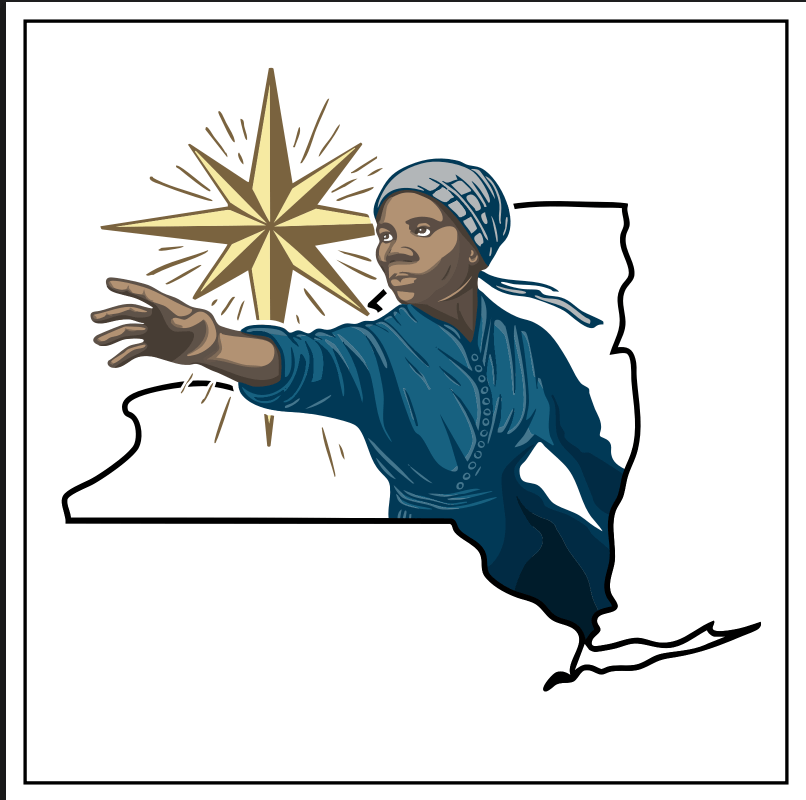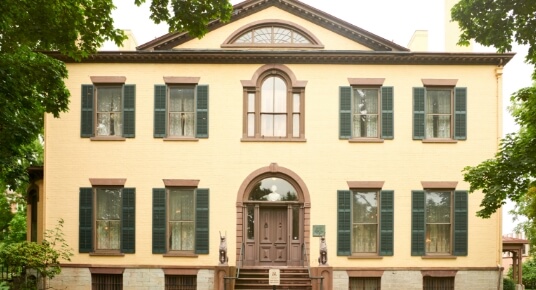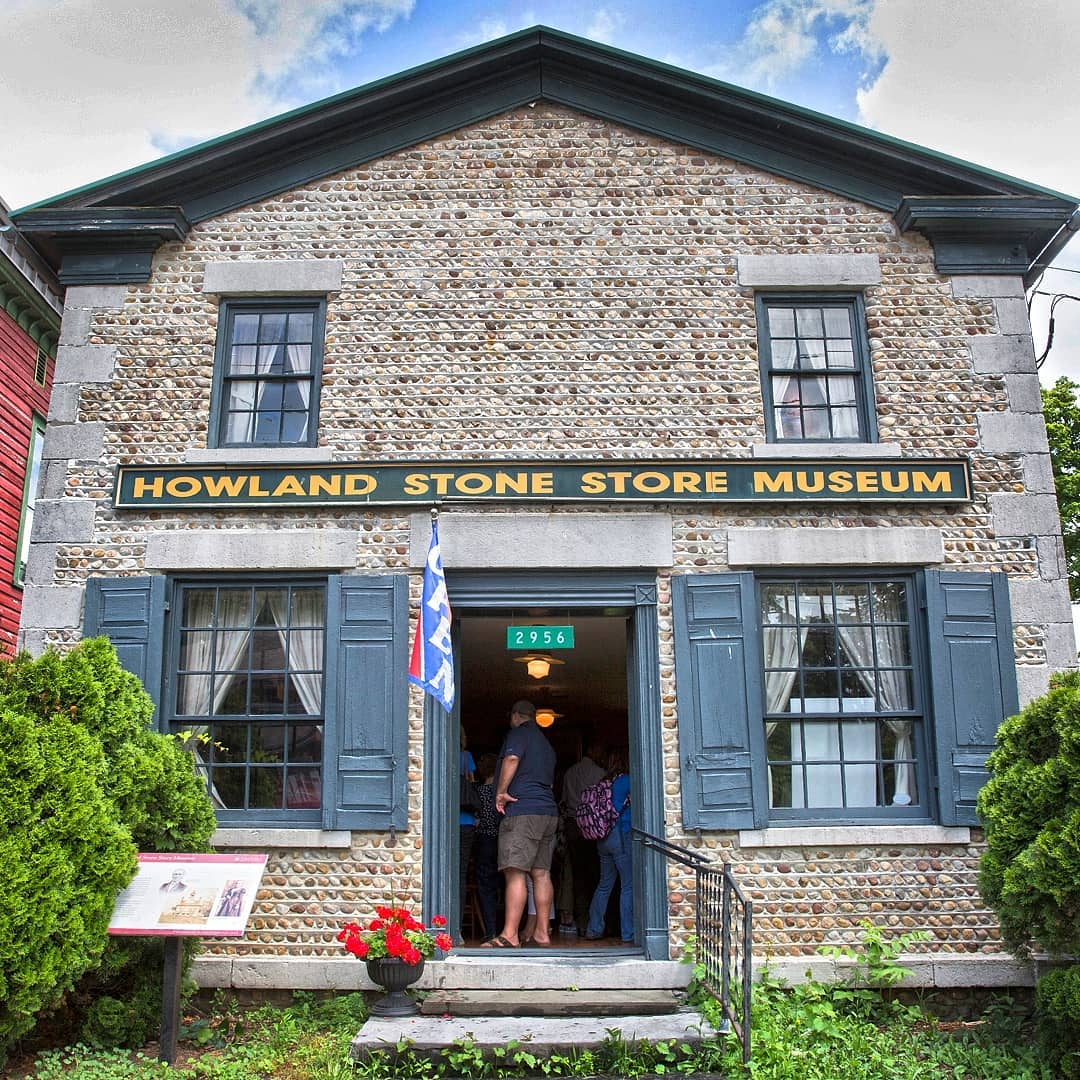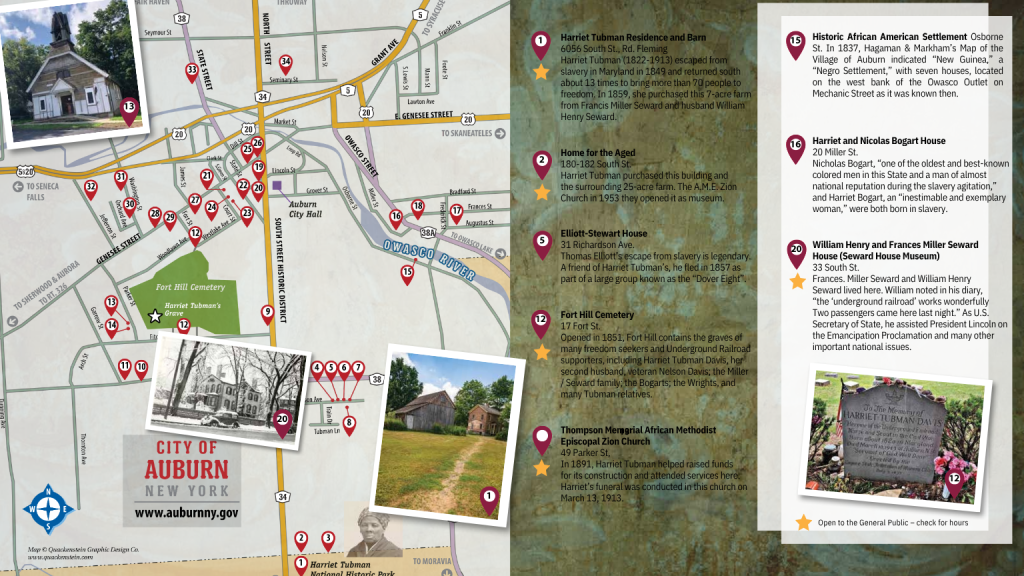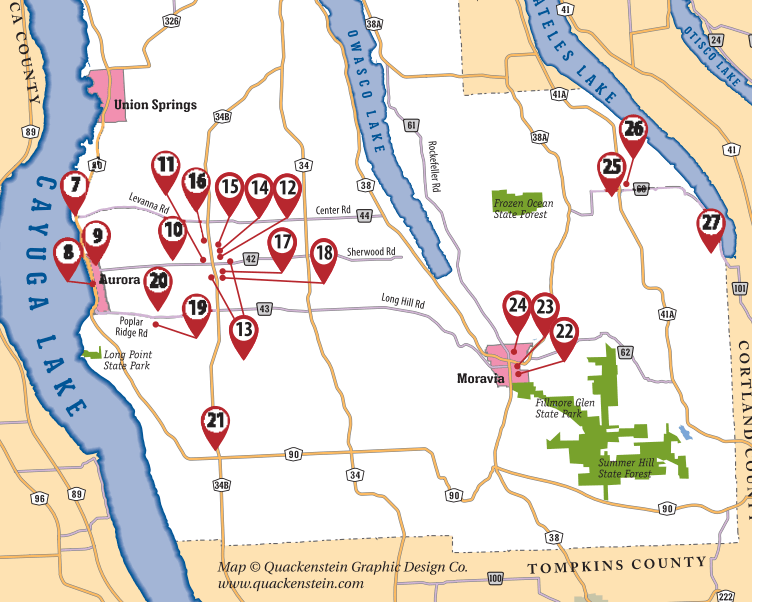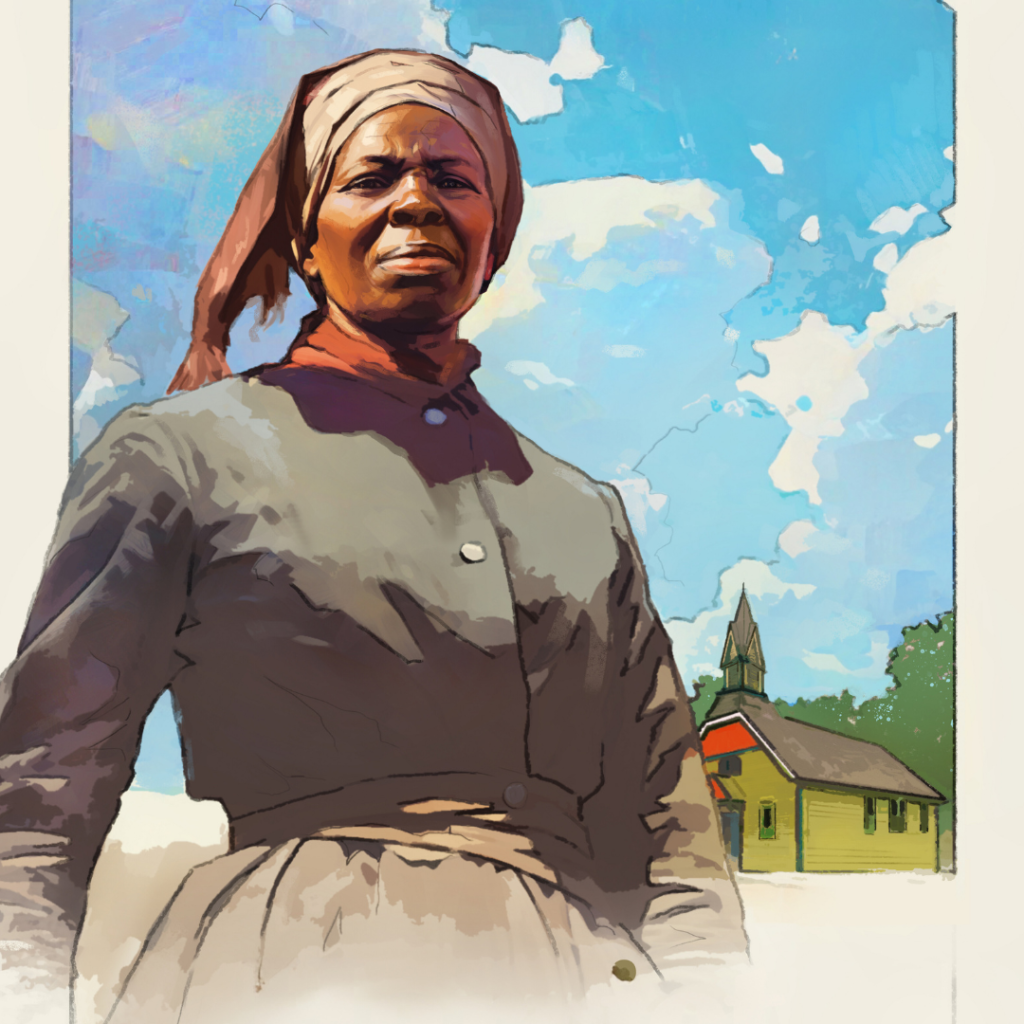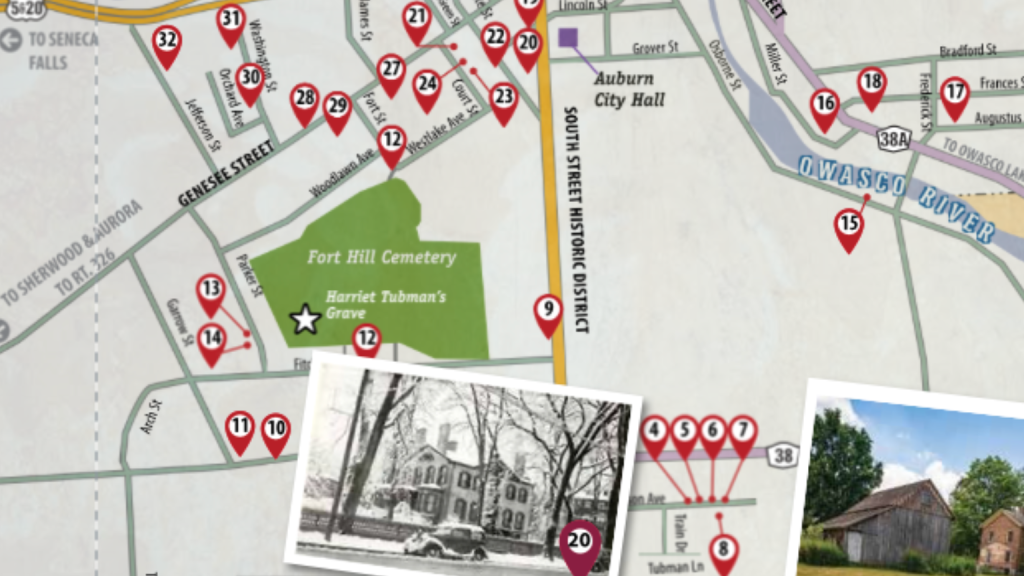
Discover the Underground Railroad in Cayuga County, NY
Travel the paths taken by freedom seekers, visit landmarks that commemorate the history and celebrate the heroes that guided them.
September is International Underground Railroad Month, an opportunity to honor the legacy of freedom seekers and explore Cayuga County’s powerful role in this history.
Walk in their footsteps and experience this story where it happened.
From 1830 to 1865, abolitionists created an extensive network of churches, safe houses, and community spaces known as the Underground Railroad to help enslaved people escape to freedom. The term “underground” referred to the secretive nature of the operation, not a physical underground system.
Using railroad-related codewords and symbols, the network relied on secrecy, disguises, and various modes of travel including on foot and by water—to help people reach free states or Canada. Escaped enslaved people were called “passengers,” “cargo,” or “freight.” Safe houses were known as “stations,” often marked by subtle signals like a candle in the window or a lantern in the yard. These stations were typically ordinary places such as homes, churches, and businesses.
Cayuga County played a significant role in the Underground Railroad, with over 100 identified sites. Its central location in the Finger Lakes region made it a key crossroads for routes from Philadelphia to Lake Ontario and from eastern New York toward Niagara Falls and Canada.
The county’s importance stemmed not only from geography but from its people. Quaker families and prominent local figures, including Martha Coffin Wright, Frances and William Seward, and the Howland family of Sherwood were active in the network. They collaborated with organizations like the Philadelphia Vigilance Committee, led by William Still, who often directed freedom seekers to Auburn. African American residents also played critical roles, including Morgan “Luke” Freeman, a formerly enslaved barber from Auburn.
Harriet Tubman-Famous Conductor
Harriet Tubman was one of the most famous, courageous and iconic conductors of the Underground Railroad. She risked her life time and again to lead enslaved people to freedom. After escaping slavery in Maryland in 1849, she returned south multiple times, guiding dozens to safety across treacherous terrain to the North and into Canada. Her fearless determination made her one of the most legendary figures in American history and earned her the title of, Moses of her people.
Though her journey began in Maryland, Harriet Tubman chose Auburn, NY as her permanent home in 1859. She lived here for the final 50 years of her life, dedicating herself to causes of freedom, justice, and community care. Today, you can walk in her footsteps—visit her home, the church where she worshipped, and her final resting place at Fort Hill Cemetery.
Come to Auburn, NY—the hometown she chose—and connect with the powerful legacy of a woman whose bravery helped change the course of history.
Strategies Harriet Tubman Used Along the Underground Railroad
Networking
Harriet Tubman made 13 trips back south and rescued over 70 people. Like other conductors, she had a network of collaborators, including “stationmasters,” who hid her charges in barns and other safe places along the way. She would, for example, sing certain songs, or mimic an owl, to signify when it was time to escape or when it was too dangerous to come out of hiding.
Timing
Harriet Tubman preferred to operate in the winter, because the nights were longer. She also preferred to leave on a Saturday, because notices about run-a-ways would not appear in the newspapers until Monday.
Disguises
Tubman very often relied on disguises, dressing as a man, or an elderly woman, depending on the situation. Other conductors made similar use of costumes.
Codes, Secret Pathways
Those who helped enslaved people were always in fear of being turned in by their neighbors and punished by the authorities. Because of this, everyone took great pains to keep their operations secret. This was accomplished by communicating in code. A stationmaster, might receive a letter referring to incoming fugitives as “bundles of wood” or a “parcel”. The words “French leave” indicated a sudden departure and a “patter roller” was a slave hunter.
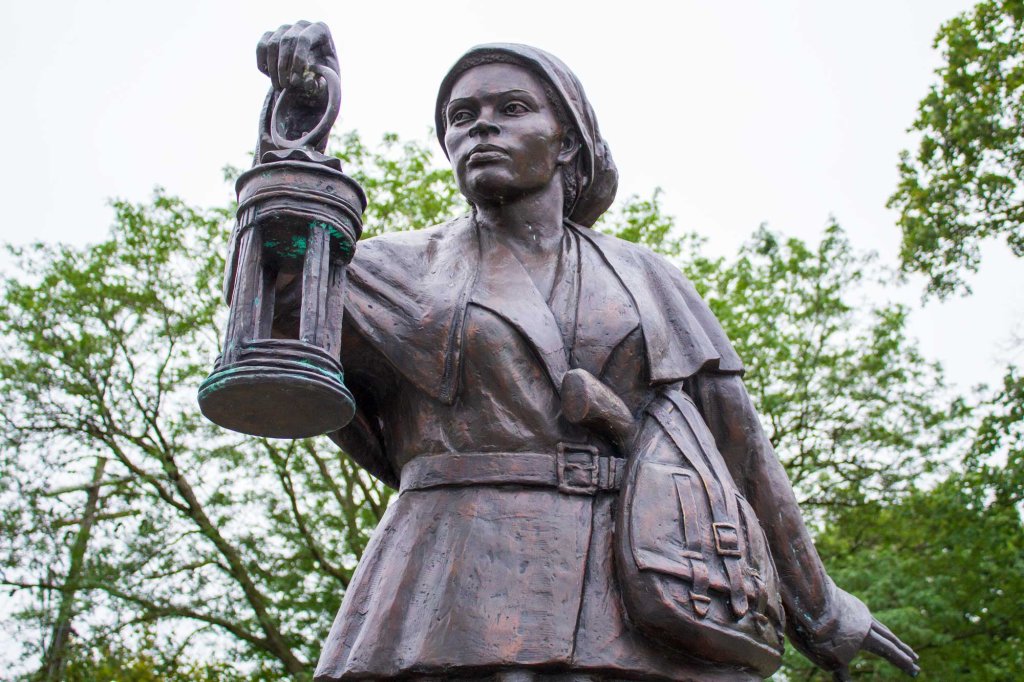
Exploring Underground Railroad Sites
Over 100 Underground Railroad sites have been identified in Cayuga County. Today, you can still see some of the churches and meeting houses in Cayuga County that were stations on the Underground Railroad. Experience and explore them for yourself at your own pace with one of our self-guided tours.
📍 Harriet Tubman’s Underground Railroad Self Guided Tour Maps
Discover key locations with our specially curated maps, one is focused on the City of Auburn and the other covering the broader Cayuga County area.
The Auburn Tour includes 34 sites and the Cayuga County tour includes 27 sites.
📱 Free Mobile App
Take the story with you! Download our Harriet Tubman’s Underground Railroad Tour app for a deeper, on-the-go experience.
Scan the QR code below (Google Play, Web Page, Apple Play) , search the app name in your favorite App Store, or visit htlc.stqry.app
Harriet Tubman Underground Railroad Scenic Byway
Cayuga County plays a vital role in the proposed Harriet Tubman Underground Railroad Scenic Byway, a statewide initiative honoring the path to freedom and the courageous individuals who shaped it. As the chosen home of Harriet Tubman for more than 50 years, Auburn and the surrounding region are central to the story the byway seeks to tell. The Corridor Management Plan (CMP) outlines key historical sites in Cayuga County and across the state, preserving and interpreting this legacy for future generations. The CMP will be reviewed by the New York State Department of Transportation and is scheduled for submission to the New York State Legislature in early 2026.
